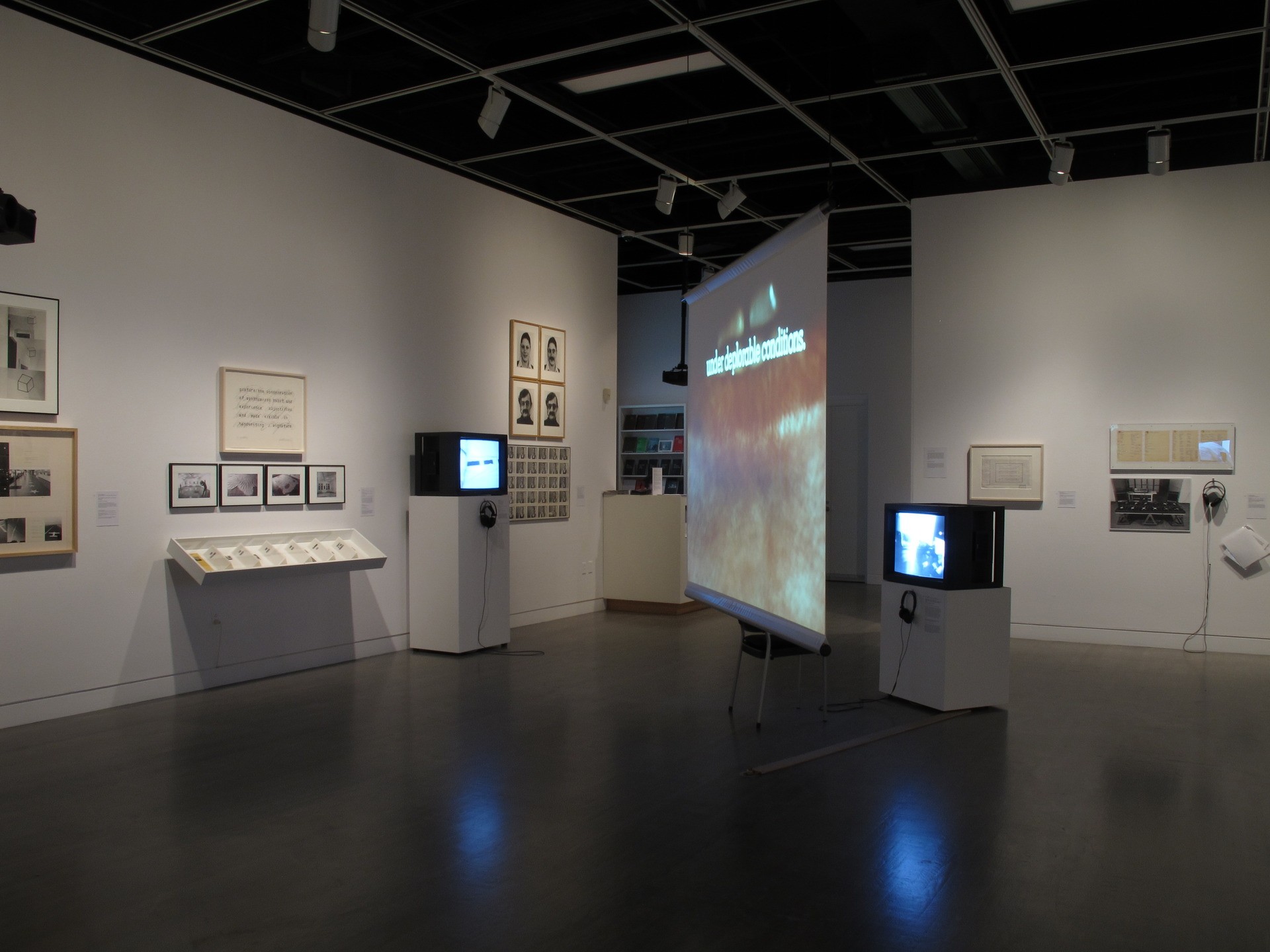Michèle Thériault, long-time director of Concordia’s Ellen Art Gallery, is off to explore new artistic frontiers
 Michele Thériault: “I view both artmaking and curating as intellectual activities that allow us to interface with all aspects of the world we live in.”
Michele Thériault: “I view both artmaking and curating as intellectual activities that allow us to interface with all aspects of the world we live in.”
After a memorable 20-year career at Concordia, Michèle Thériault — director of the university’s Leonard and Bina Ellen Art Gallery — has left the university to pursue other artistic projects.
Thériault became director of Concordia’s oldest gallery in 2003, bringing her expertise in art history and curation.
Before joining the university, she held several curatorial roles at Canadian museums and galleries, including the Art Gallery of Ontario. She also worked as an independent curator and taught museology and contemporary art at several universities.
Over the years, Thériault helped develop an impressive program of critical exhibitions and events in response to contemporary issues. From showcasing international artists to undertaking experimental curatorial approaches, Thériault introduced Montrealers to exhibitions that sought to challenge the limits of artmaking and curating.
“I view both artmaking and curating as intellectual activities that allow us to interface with all aspects of the world we live in,” explains Thériault. “Artists, curators and writers give form to their apprehension of the world in what they produce, and the gallery provides a forum to reflect upon it.”
Thériault’s many substantial accomplishments include developing one of Canada’s richest online archives for visitors and researchers. She also managed to bring important international artists to Montreal for the first time through exhibitions at the gallery.
Harun Farocki, a prominent German film artist, had his first major North American exhibition in 2007 at the Ellen Gallery. Other notable artists included Lebanese artist Walid Raad, who presented his work at Concordia in 2006, and American feminist conceptual artist Silvia Kolbowski, who was a part of the 2009 exhibition Nothing and Everything.
Thériault was also a co-curator of Traffic. Conceptual Art in Canada: 1965-1980 (2012), which toured across Canada and in Europe.
 Rock Piece (Ahuriri edition), by Asinnajaq, 2016. Artwork displayed as part of the Among All These Tundras exhibit.
Rock Piece (Ahuriri edition), by Asinnajaq, 2016. Artwork displayed as part of the Among All These Tundras exhibit.
“Working within a university art gallery has always been top on my list, as it meant that research and experimentation could be at the heart of one’s direction,” Thériault says.
“The freedom offered in programming at the Ellen Art Gallery is unlike the demands and objectives of large museums.”
Thériault also initiated significant projects with and by Indigenous artists and curators. The 2018 exhibit Among All These Tundras was a first-of-its-kind exhibition in Canada on the circumpolar North. It explored Indigenous themes of land, resurgence and sovereignty.
The exhibition also showed that circumpolar peoples from across the world share many of the same experiences and concerns.
Owerà:ke Non Aié:nahne / Filling in the Blank Spaces (2017) was a project by Jason Edward Lewis, Concordia professor of design and computational arts, and Skawennati, BFA 92, GrDip 96, a Mohawk multimedia artist. It focused on the creation of Indigenous-determined territories in cyberspace and envisioning Indigenous peoples in the future.
The exhibition-forum highlighted the diverse approaches Indigenous artists, researchers, educators, designers and activists are using new media to enhance and support their cultures and communities.
Other shows challenged curatorial parameters and viewer participation. Just Watch Me (2015) turned the gallery into an activity centre, exploring concepts of national belonging and the legacy of immigration in the 1970s in the creation of neo-Quebec identity.
The project transformed the gallery into a social club, which included a disco/bar, fair-trade café, stage, movie theatre, studios for artists-in-residence, library and theatre.
The objective was to enable the public to reflect upon the artist’s role as a social actor as well as the state’s role in art through a meeting place that encouraged dialogue and collective creation.
 Québec section, exhibition Traffic: Conceptual Art in Canada 1965-1980 (2012). | Photo by Paul Litherland.
Québec section, exhibition Traffic: Conceptual Art in Canada 1965-1980 (2012). | Photo by Paul Litherland.
Thériault was also behind the SIGHTINGS satellite exhibition program, launched in 2012. The SIGHTINGS cube, located on the ground floor of the Henry F. Hall Building, is an experimental platform to critically reflect upon the possibilities and limitations of the modernist “white cube.”
As part of this program now curated by the Max Stern curator of research Julia Eilers Smith, artists and curators are invited to develop projects for the cubic display unit.
Under Thériault’s tenure as director, the gallery grew its attendance, upgraded its facilities and made several key acquisitions. It also tripled its Canada Council for the Arts funding.
“During my time at the gallery, I have enjoyed working with exceptional artists of all kinds — curators, writers, translators, designers, professors, students and staff,” Thériault says.
“I’m grateful to have been able to work with local and international artists, and introduce new ways of thinking, exhibiting, performing, disseminating and interacting with the public.”


